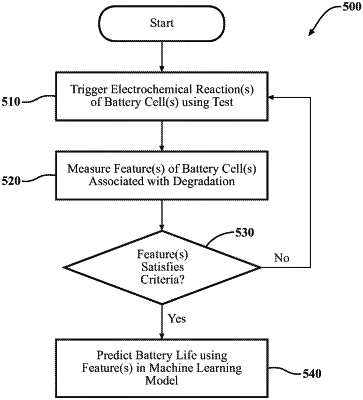| CPC G01R 31/3842 (2019.01) [B60L 58/16 (2019.02); G01R 31/367 (2019.01); G01R 31/3648 (2013.01); G01R 31/392 (2019.01); G06N 20/00 (2019.01)] | 20 Claims |

|
1. A prediction system comprising:
a memory communicably coupled to a processor and storing:
a prediction module including instructions that when executed by the processor cause the processor to:
measure data of a battery cell associated with an electrochemical reaction from a degradation mode having non-linear properties, and the degradation mode is triggered by tests during a diagnostic cycle;
identify a feature that correlates with degradation rates of the battery cell from the data by observations from varying discharge profiles and through grouping the tests according to physical properties, end-of-life (EOL) parameters, a series of chemical properties associated with the observations, and a number of cycles for the battery cell;
predict an EOL of the battery cell by using the feature in a machine learning (ML) model; and
cycle the battery cell according to the EOL for reducing the degradation rates.
|